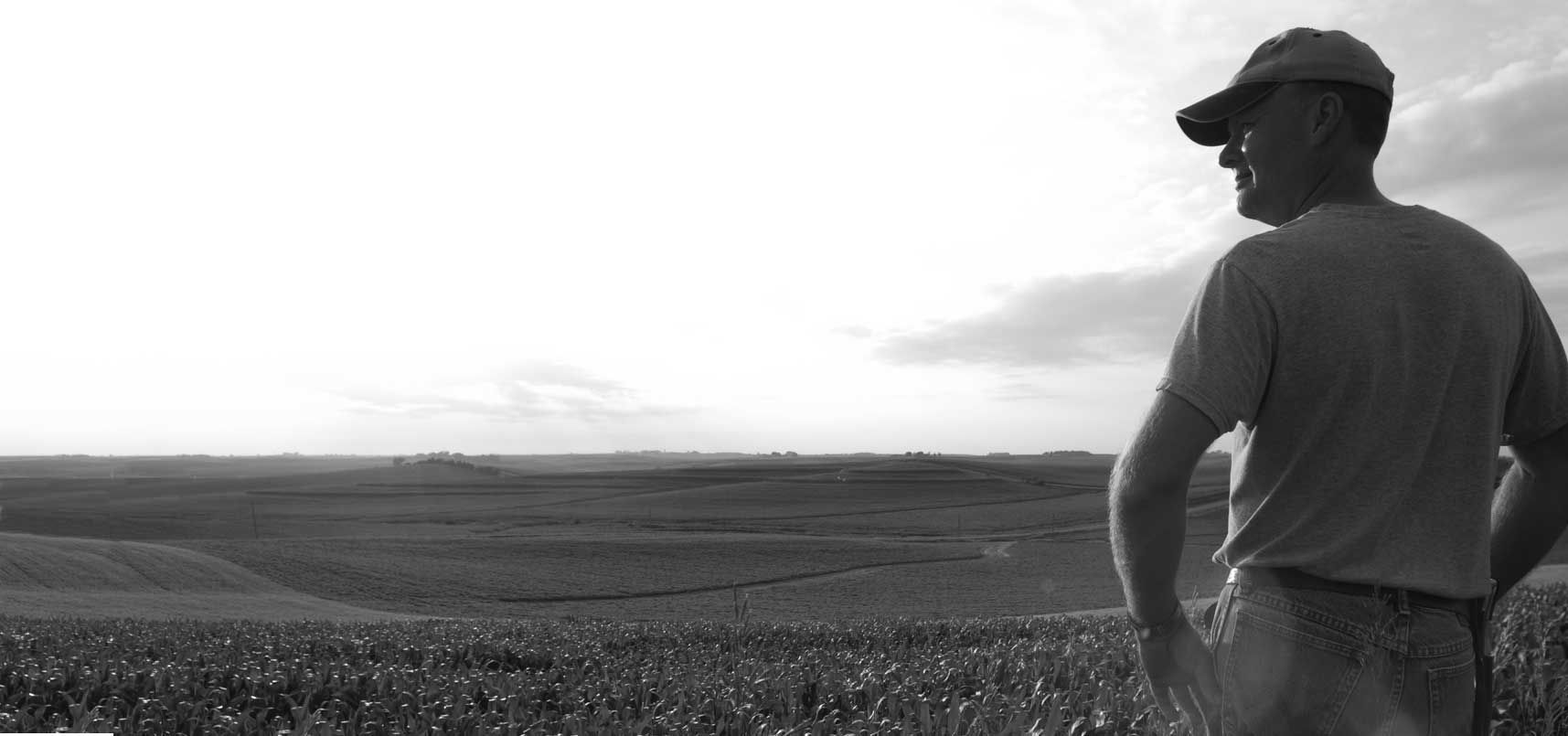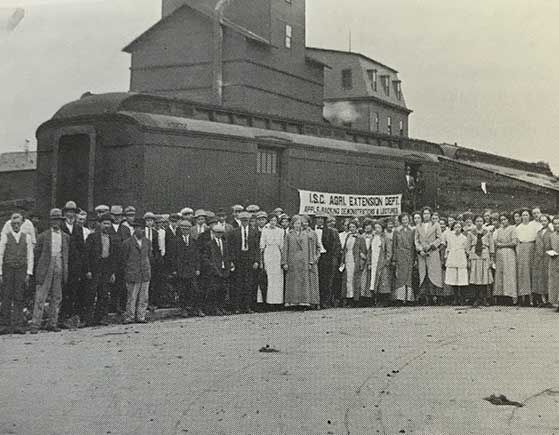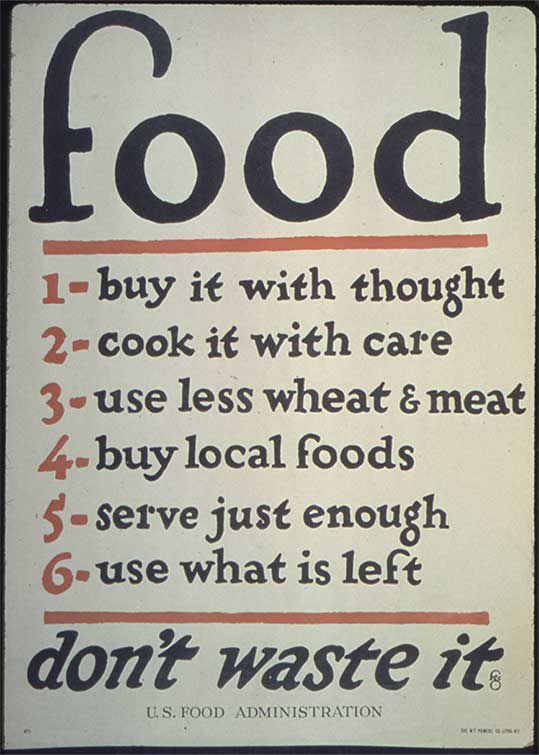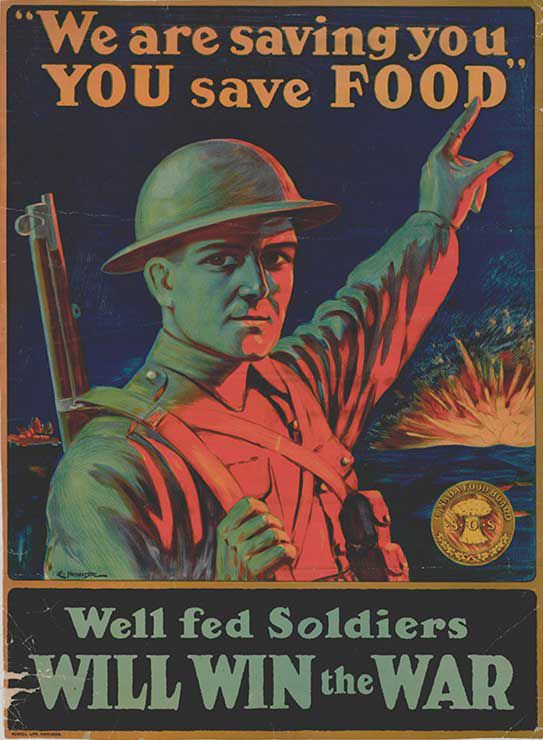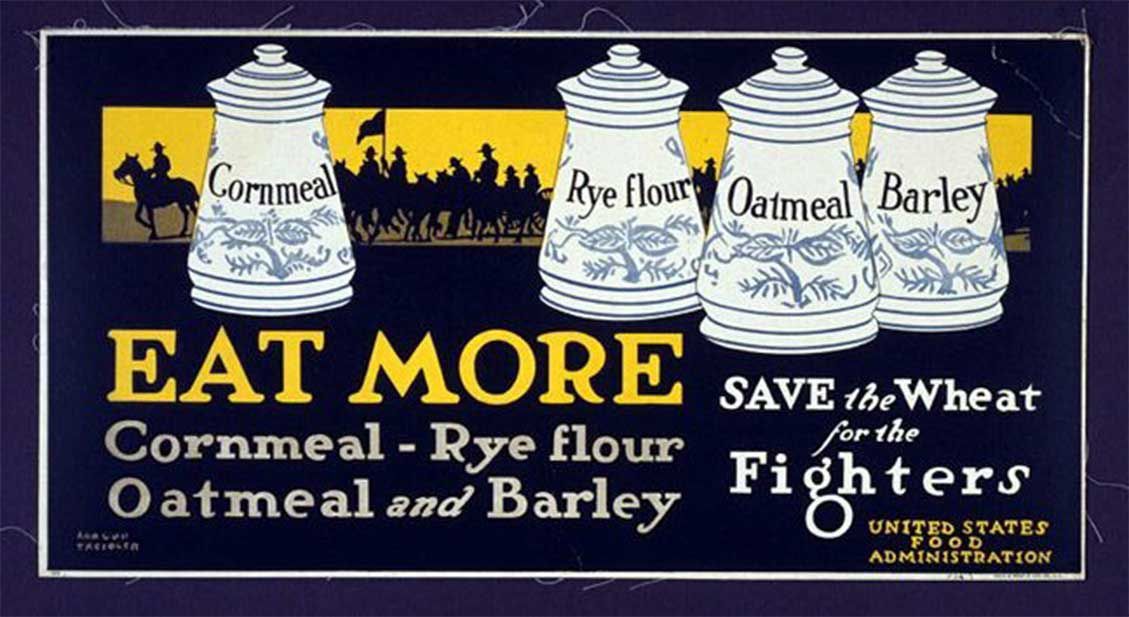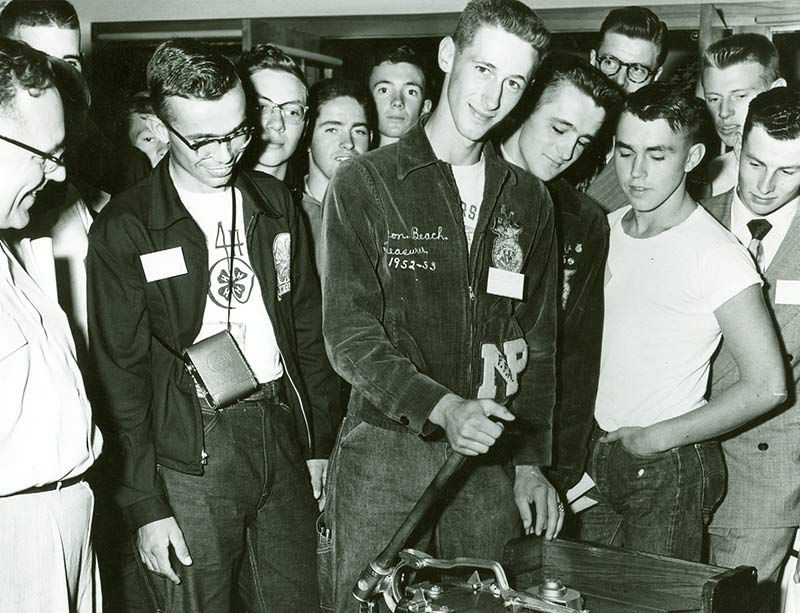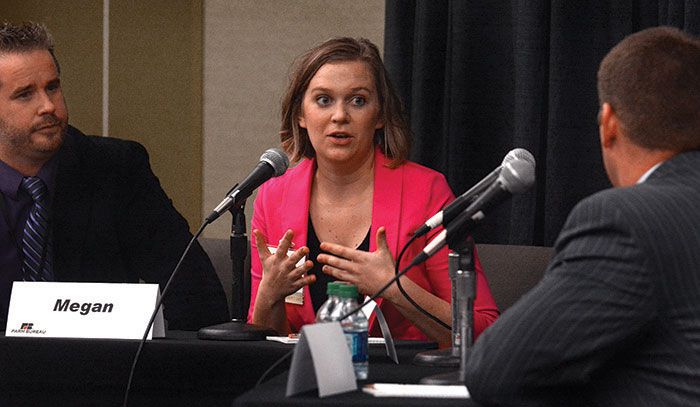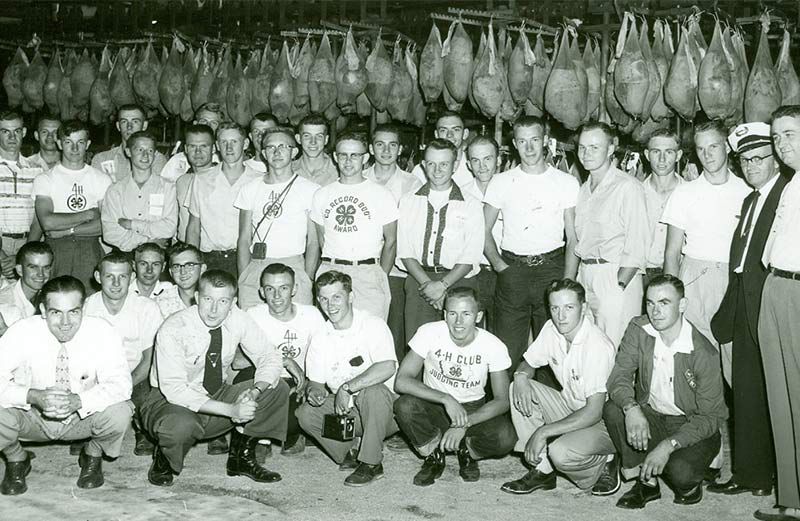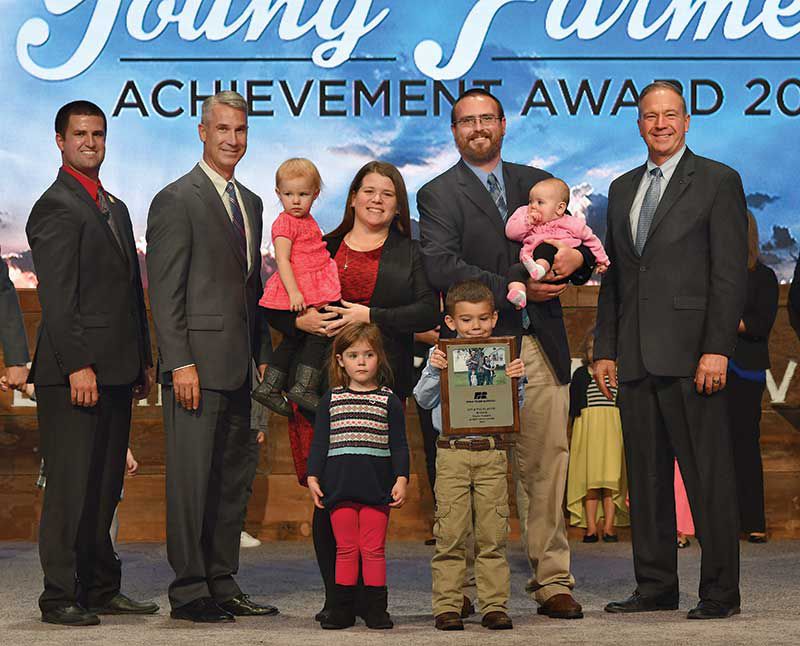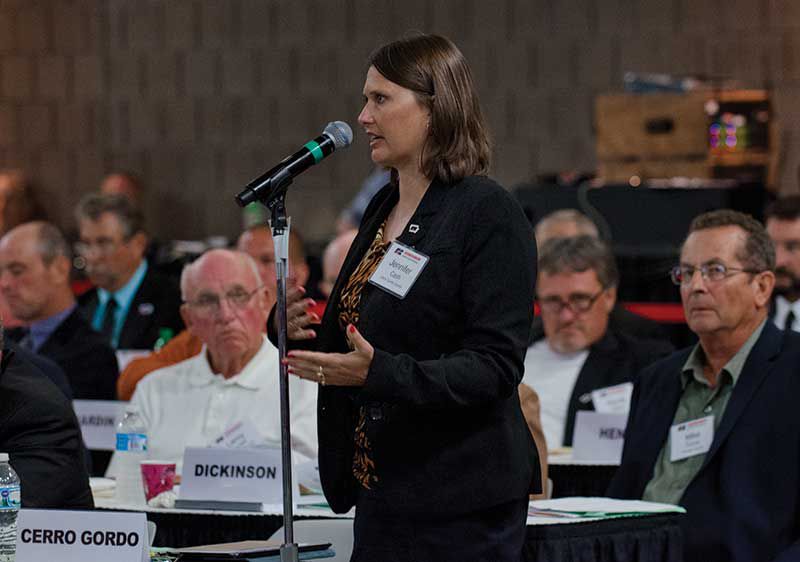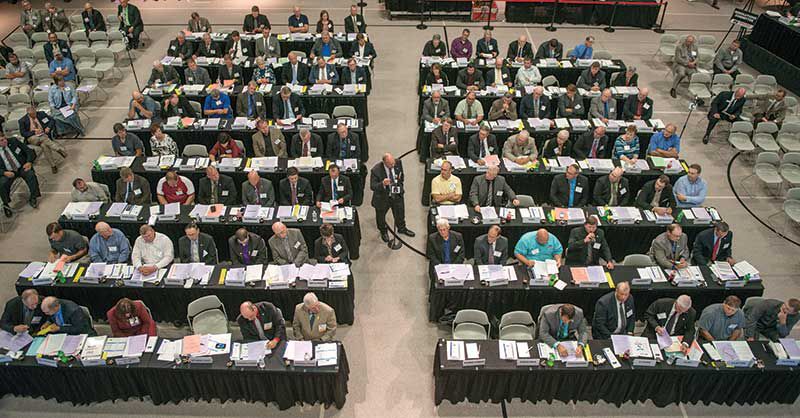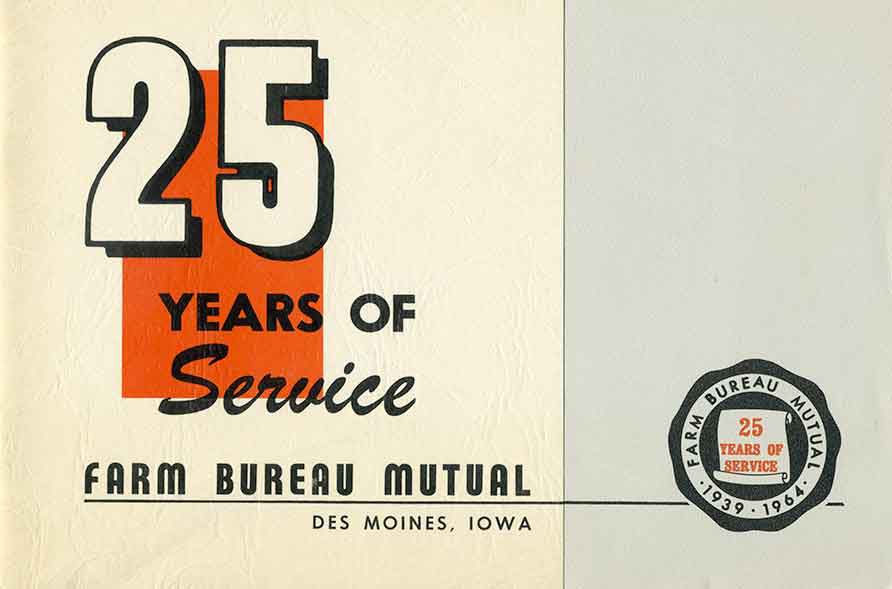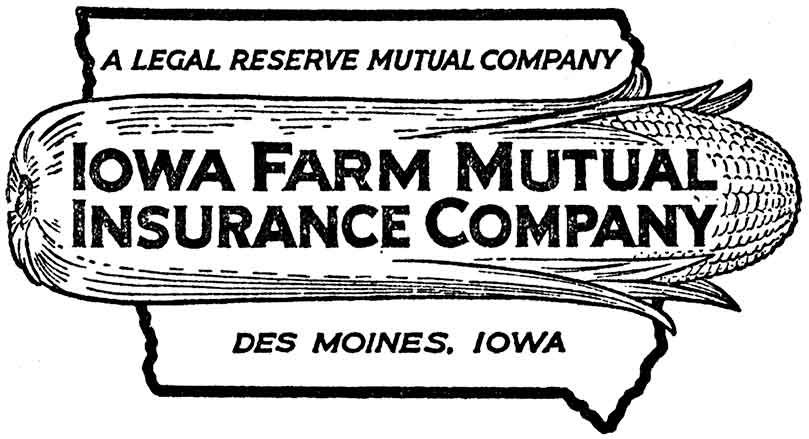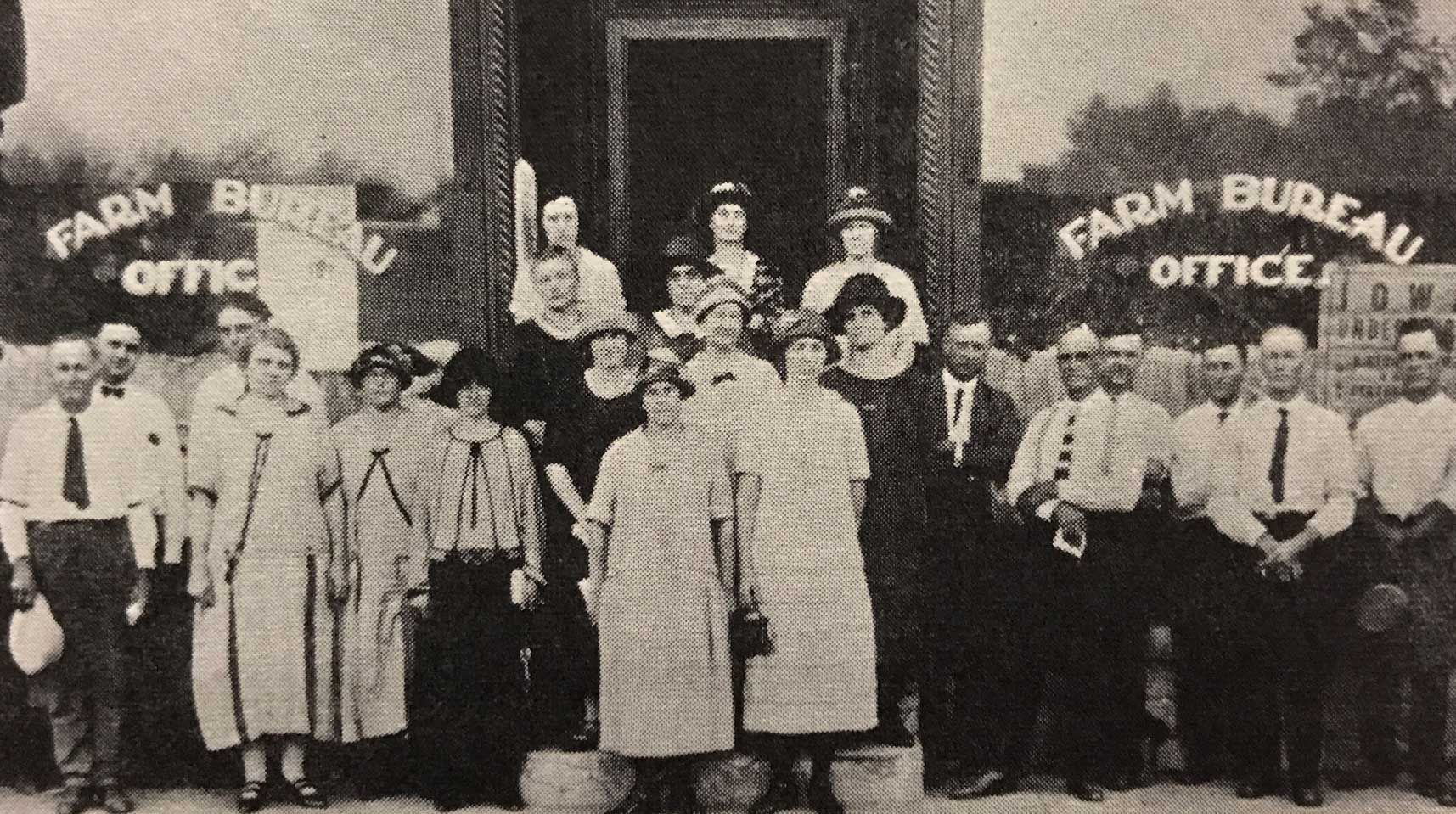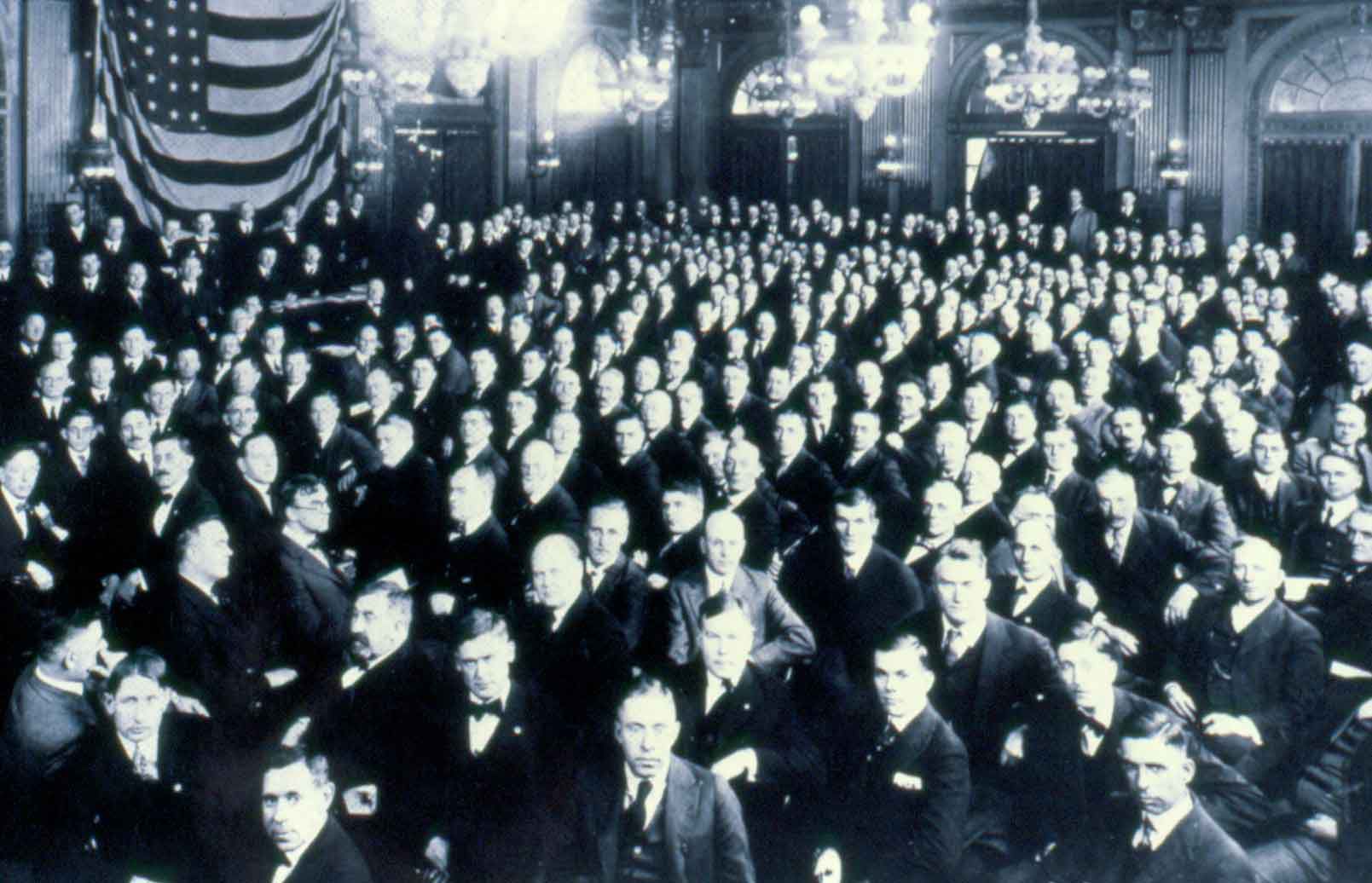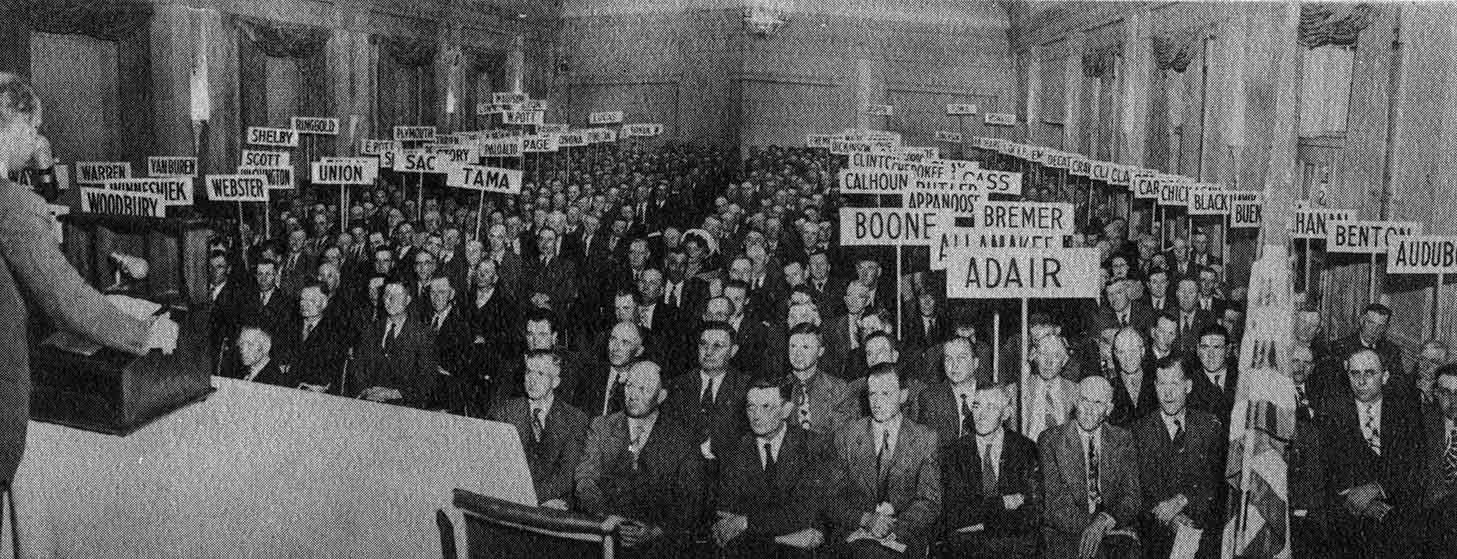1906 - Farm education creates local need.
Responding to increasing demand for farmer education, the Iowa legislature appropriated funding for Iowa State College (now Iowa State University) to develop an Extension department. Counties formed Farm Improvement Associations (the precursor to county Farm Bureaus), to help bring Extension services to farmers and their families.
Pictured: “Corn trains” and other local gatherings brought education to farmers in the early 1900s.
1912 - First county Farm Bureaus formed by local farmers, community leaders.
Clinton County created a Better Farming Association, with the county superintendent elected as the association’s first president. That association eventually became the Clinton County Farm Bureau. Scott, Black Hawk, Muscatine, and Montgomery were the next counties to create Farm Improvement Associations (which later became Farm Bureaus).
Charter members in most of the counties included many non-farmers. Leaders from commercial clubs, chambers of commerce, teachers, bankers, lawyers, merchants, real estate brokers, coal operators, editors and stock buyers joined the farmers because they wanted to help agriculture assume its proper place in a stable economy.
Pictured: Fayette County Farm Bureau leaders in 1925
1917 - World War I drives need for food, county Farm Bureaus statewide.
World War I and calls from President Woodrow Wilson and Governor William L. Harding to increase Iowa’s food supply helped accelerate the formation of county Farm Bureaus.
Every county without a Farm Bureau was urged to organize one to promote food production and food conservation. 25 county Farm Bureaus were organized by the time the U.S. entered World War I in April 1917, and by the following spring every county in the state had organized a county Farm Bureau. One county, Pottawattamie, had two Farm Bureaus, making 100 total. Iowa was the first state to be totally organized, with a Farm Bureau organization and a county agent in every county.
The records show that Iowa produced more foodstuff in the war years of 1917 and 1918 than in any previous two-year period, despite unfavorable weather and a shortage of farm labor.
1918 - The Iowa Farm Bureau Federation (IFBF) is born.
County Farm Bureaus began discussing the possibility of federating in 1917. While farmers appreciated Extension’s farm education service, they needed more: a voice in legislation governing their industry, improved marketing for their products, and relationships with other related interests (packers, railroads, etc.)
On December 27, 1918 the Iowa Farm Bureau Federation (IFBF) was created during a meeting in Marshalltown. 72 county Farm Bureaus were present. They voted unanimously to form the state federation. James R. Howard was elected the first president.
Iowa Farm Bureau’s representation was set up to resemble the Senate. One vote per member family (in the county Farm Bureau) and one vote per county (in the Iowa Farm Bureau) protected less populated counties from being out-voted on issues by the more populated counties. The organization’s position on issues would first be determined at the local level; then each county delegate would vote at the state level. It was also determined that Iowa Farm Bureau would be non-partisan and represent all of agriculture, instead of separate commodities.
Henry A. Wallace (editor of Wallace’s Farmer who went on to become U.S. Secretary of Agriculture and Vice President of the United States) said “We regard this movement as one of the most sensible efforts toward an organization of farmers that has yet been made. Those gentlemen who had an active part in launching Farm Bureau clearly have no other desire than to build a farm organization through which the farm sentiment in Iowa can be expressed in an authoritative, level-headed way, and through which the farmers of the state may act collectively to promote their business, educational, and social interests.”
Pictured: Iowa Farm Bureau’s executive committee, 1919
1919 - Membership grows rapidly.
The first official Iowa Farm Bureau membership drive was organized in September 1919. The campaign closed just before Christmas, with every county canvassed and a total of 102,000 member families in the Iowa Farm Bureau.
1920 - American Farm Bureau Federation (AFBF) is born.
AFBF was officially created in 1920, and Iowa’s President James R. Howard was elected the first AFBF president. During the convention (in Chicago) to discuss the formation of AFBF, Howard said “The county Farm Bureaus enabled us to look over our line fences, the state organizations enabled us to work on our state problems and now, we have before us the possibility of a national association to create the national agricultural spirit.”
Pictured: State Farm Bureaus gather in Chicago to discuss the creation of American Farm Bureau in November 1919.
1922 - Iowa creates a State Women’s Committee.
On April 12, 1922, a group of eleven farm women from different areas of the state met in Des Moines and developed a plan for involving women in Farm Bureau more effectively.
Mrs. Ellsworth Richardson became the first official State Women’s Committee chair in 1923, and she held the position for 15 years. She also served on various national projects for American Farm Bureau and, as chair of the national home and community committee, was one of four women to present the committee’s resolutions to President Roosevelt. She was also a candidate for the U.S. Senate during the 1938 primary.
Richardson was one of many women who played transformative roles in Farm Bureau’s early years. Ruth Sayre was another key player in Farm Bureau’s evolution. Sayre began her Farm Bureau work as a township women’s chair in 1920. She later became chair of the state women’s committee and president of American Farm Bureau’s women’s committee. Sayre helped connect rural Iowa women to national and international affairs through Associated Country Women of the World (a global organization of women working for improved rural conditions). Sayre eventually became president of A.C.W.W. and left a legacy as a recognized national and international leader in agriculture and rural living.
1934 - Farm Bureau youth groups form.
The Junior Farm Bureau, involving thousands of children between the ages of 10 and 18, was created in 1934. A short time later, young married farmers ages 18-30 formed their own groups to discuss the specific problems which confront new farmers. The two groups eventually merged into County Farm Bureau Young Member Committees.
Counties developed their own programs for young members, including “talk meets,” lessons in parliamentary procedure, co-sponsoring sports festivals, and recreation such as picnics, dances, parties, summer camps, and tours. They also engaged in community service.
Today, many young members serve on their County Board of Directors and are also involved in county Young Farmer Committees. And 500-plus young farmers flock to Des Moines every winter for Iowa Farm Bureau’s annual Young Farmer Conference.
1939 - Farm Bureau creates Mutual Insurance Company.
Due to the need for more competition and a lack of services in the Midwest (most insurance companies were based in the east and farming was considered too high risk to underwrite), Iowa Farm Bureau voting delegates voted to begin their own Iowa Farm Mutual Insurance Company at the annual meeting in January 1939.
1940s - New opinionnaire strengthens grassroots policy development.
In the early 1940s, Iowa Farm Bureau decided there needed to be more structure and deliberate participation from the membership in its policy development (the annual process to determine where Farm Bureau stands on public policy issues). The result was an opinionnaire that allowed farmers across the state to respond to the same questions. This survey provided much better feedback on priority issues, which in turn allowed Iowa Farm Bureau to take a firm stance on those issues with broad support in the country.
An opinionnaire is still used today and is a key component of Farm Bureau’s success at the state capitol.
Pictured: Iowa Farm Bureau’s annual policy development process involves members from all 100 county Farm Bureaus.
1944 - Delegates create Farm Bureau Life.
With the success of Farm Mutual, Iowa Farm Bureau voting delegates approved the creation of the Farm Bureau Life Insurance Company in 1944 – it opened for business in 1945. Farm Bureau Life sold $29 million of new business in the first year, which was a new world record for any insurance company.
